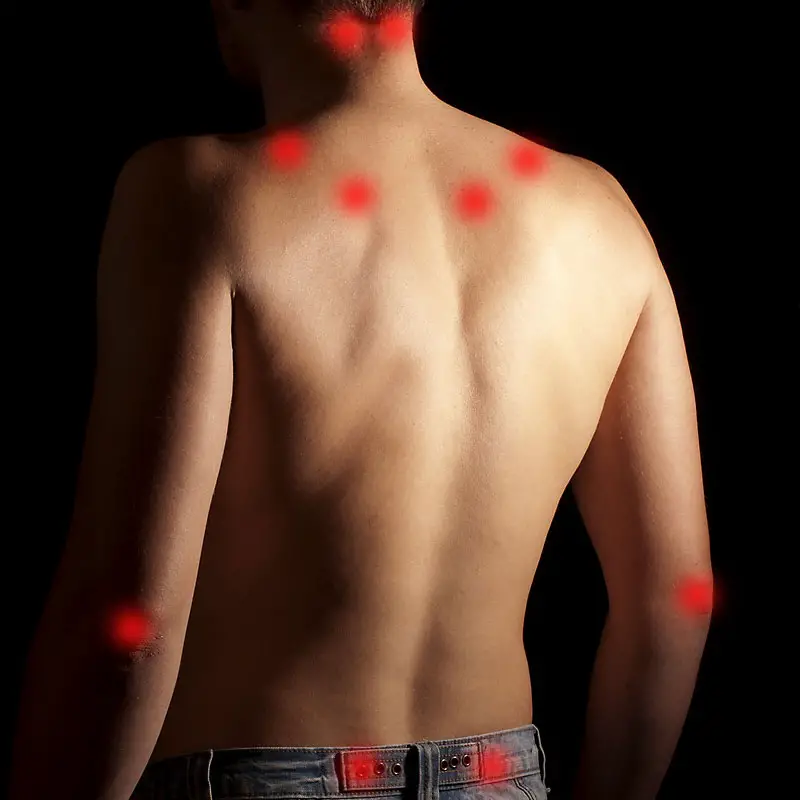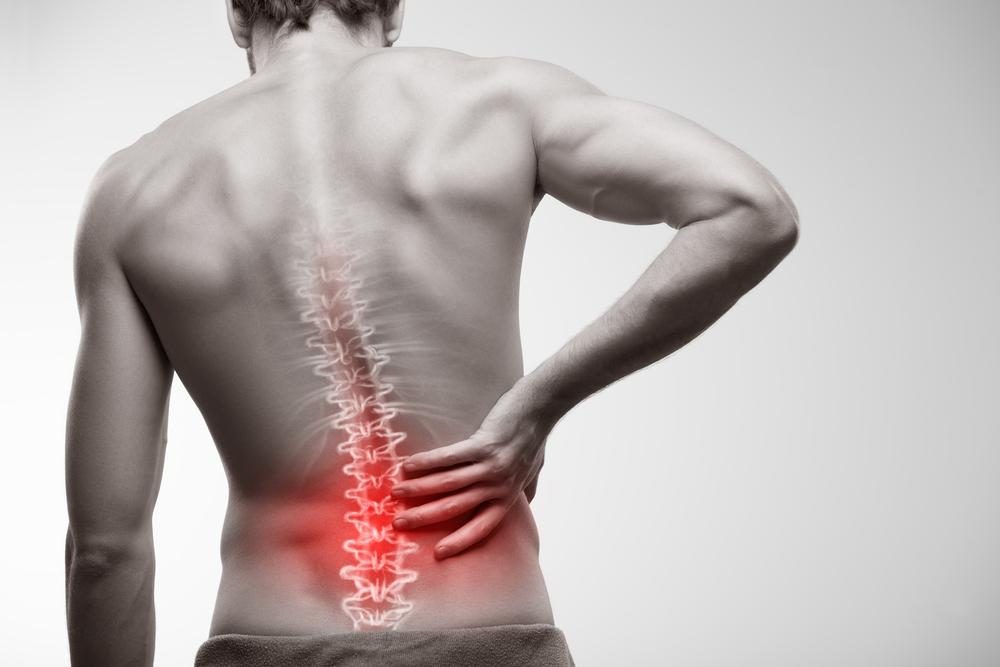Article reviewed and approved by Dr. Ibtissama Boukas, physician specializing in family medicine
This article explains everything you need to know about polymyalgia rheumatica, how to clarify its diagnosis, and several strategies to reduce pain and improve quality of life.
What is polymyalgia rheumatica?
Also called polymyalgia rheumatica or muscular rheumatism, polymyalgia rheumatica is a chronic inflammatory rheumatological disease that affects the muscles, the cause of which is currently unknown.
It affects the regions of the neck, shoulders, hips and pelvis, and mainly affects the elderly. More specifically, this rheumatism begins to appear at the age of 50 with a spike at the age of 70. In all, this disease affects five out of ten thousand people.
It is an autoimmune disease that triggers inflammation of blood vessels (vasculitis). Specifically, this condition causes muscle pain and stiffness that are more pronounced in the morning.
The causes
Like many such conditions, the causes of polymyalgia rheumatica are not well understood. There are theories that state that external factors cause it, such as certain viruses that affect the immune system such as:
- parvovirus B19
- parainfluenza
- hepatitis B virus
It must be said that it is a disease that can be hereditary, since in some cases a family predisposition is often noticed.
Symptoms
Symptoms begin to appear especially around the age of 70. Polymyalgia rheumatica mainly affects white populations in northern Europe. Women are more susceptible than men.
Pain in the areas of the body concerned are the most frequent symptoms, and they are accentuated at night and very early in the morning for a period of approximately one hour.
These pains are located where there are many muscles such as the shoulders, hips, gluteal muscles, pelvis and thighs. They are usually accompanied by morning muscle weakness. The patient will then have difficulty getting up, or moving his arm, or even climbing stairs. Obviously, this causes problems on a daily basis.
In addition to pain, there are other symptoms that may occur, such as:
- neck pain
- edema in the joints
- poor general condition causing discomfort
- fever
- tiredness
- asthenia
- loss of appetite
- weight loss or anorexia
- night sweats
- of depression.
Sometimes these inflammations do not only affect the muscles. The joints can be affected and cause stiffness and loss of flexibility. This comes from an accumulation of synovial fluid at the joint level which limits the range of motion of the joints.
Diagnostic
It is necessary to know how to tell the difference between this disease and others similar to it when making the differential diagnosis. Indeed, itThis pathology is often confused with another pathology that is similar, which is called rheumatoid arthritis. The latter also causes pain in the same places as polymyalgia rheumatica, except that it affects other joints over time.
Moreover, this disease can be confused with other pathologies that have nothing to do with arthritis, such as some types of cancer, heart and thyroid pathologies.
It can also be confused with tendonitis of the rotator cuff, but this cause can be clarified with an imaging test such as MRI.
Also, you have to check the rate of the C reactive protein because it is increased in case of polymyalgia rheumatica, and it is a reference to clarify the diagnosis.
In summary, it can be concluded that the diagnostic criteria for polymyalgia rheumatica include the following clues:
- A patient who is over 50 years old.
- Pain and stiffness in both shoulders, neck, hips
- A sedimentation rate that is greater than 40 mm/h.
- There is sensitivity to corticosteroids.
On the other hand, it must be understood that the diagnosis of polymyalgia rheumatica is difficult to make. The doctor will mainly base himself on the symptoms initially, then ask for additional tests (blood tests and medical imaging) to further investigate the source of the problem.
The doctor will also give the patient cortisone to see if they respond favorably to treatment, potentially indicating an inflammatory cause (although other types of inflammatory arthritis also respond to anti-inflammatory treatments).
Treatment
To treat polymyalgia rheumatica, medications aimed at treating the inflammation must be combined with physical therapy. This will help maintain joint movement and optimize function.
If drug treatment and physical therapy are applied well, the results are generally satisfactory, and the patient can learn to live with the disease on a daily basis.
Kinesitherapy
In physiotherapy (physiotherapy) treatment, the goal will be to restore movement to the shoulder and hip joints as quickly as possible. Indeed, early treatment will prevent muscle and joint contractures and stiffness. There will also be muscle work to stabilize the joints and improve strength.
pharmaceuticals
In terms of drugs, the most commonly used are:
Corticosteroids (prednisone)
It is the main drug to treat polymyalgia rheumatica because it fights the inflammation caused by this pathology. In some patients, the symptoms disappear with a single dose, while others will see an improvement after 24 hours.
The dose of prednisone is gradually reduced after the symptoms are under control. The patient must continue to take the drug for a year (even after the disappearance of symptoms) so as not to create a new inflammatory phase.
Indeed, if the prednisone is stopped too soon, it can be difficult for some people because of the resurgence of pain. If this is the case, the doctor will prescribe other treatments such as nonsteroidal anti-inflammatory drugs, or antirheumatic drugs (such as methotrexate).
It should be mentioned that when used for long periods of time, prednisone can have side effects. Thus, if it is taken for more than three months, the patient must also take calcium and vitamin D to protect the bones and prevent theosteopenia.
Nonsteroidal anti-inflammatory drugs
To reduce the inflammation caused by polymyalgia rheumatica, non-steroidal anti-inflammatory drugs are also used to act on pain. It should be understood that they are not as effective as prednisone for the treatment of polymyalgia rheumatica. However, they can be used as a secondary treatment.
Moreover, nonsteroidal anti-inflammatory drugs can help reduce the dose of prednisone in patients who have been taking this drug for a long time, or if there are harmful side effects.
Pain relievers
Analgesics are used to reduce pain only. They cannot treat the source of polymyalgia rheumatica. Pain relievers can include acetaminophen or paracetamol, but also strong narcotics like morphine.
Disease Modifying Antirheumatic Drugs (DMARDs)
Disease-modifying anti-rheumatic drugs (DMARDs) are used for other types of arthritis. And treatments such as methotrexate or hydroxychloroquine are used to treat polymyalgia rheumatica and reduce the dose of prednisone given to patients (to minimize its side effects).
A word about food
A healthy, well-balanced diet should be followed well to maximize results.
Try as much as possible to eat "well" because a supply of essential vitamins and trace elements will have a beneficial effect against this disease. In case of inflammation, there is a large amount of free radicals that are formed. The vitamins consumed will neutralize them and help reduce inflammation.
To learn more about one type of diet that can reduce inflammation, improve health, and lose weight along the way, check out the following article:




